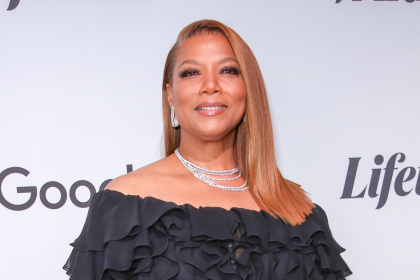
Accomplished ballerina Misty Copeland is being recognized in a major way for her admirable talent and compelling life story. A documentary is being made about a key period in the 32-year-old dancer’s career that will likely teach those both in and outside of the ballet field that even when adversity serves as a roadblock, it doesn’t have to stop anyone from reaching their aspirations.
The Nelson George film, A Ballerina’s Tale, details Copeland’s career beginning with her lead performance in Igor Stravinsky’s Firebird to her devastating injury, and finally showing her return to the American Ballet Theatre, Variety reported.
The film has already been acquired by Sundance Selects and will be released in theaters and on VOD on Oct. 14. The documentary, produced by Leslie Norville and executive produced by Copeland, Dorria L. Ball, and Ingrid Graham, premiered in April at the Tribeca Film festival.
The celebrated dancer’s history is likely to resonate with young Black girls who are facing the same challenges that Copeland has tread through. With such a relatable story displayed in A Ballerina’s Tale, Copeland is sure to become an even bigger role model, and here are five reasons that is true.
At a young age, she excelled despite a roadblock that jeopardized her future in ballet.
When Copeland was a teenager and began falling in love with ballet, her family was in financial straits and did not have a car, so it was difficult for her to continue studying at San Pedro Dance Center. Her mother eventually told her she would have to stop dancing, but instead of giving up, she spent each weekend with Cynthia Bradley, who had introduced her to ballet classes at the local Boys and Girls Club. Bradley’s home was a two-hour bus ride away, but Copeland’s persistence and studying payed off and she won her first solo role in a national ballet contest at 14 years old. This victory propelled Copeland into winning many future competitions and a mega-successful career.
She broke racial barriers.
As the daughter of a biracial mother and a Black father, Copeland stood out among her peers as the lone Black dancer when she moved to New York to pursue her career.
“I was the only Black woman in a company of 80 plus dancers for a decade. I felt like I didn’t belong,” she explained at the 2015 PowHERful Summit in New York City.
But her craft was her main focus, not her skin color. “It wasn’t something that I ever thought about,” Copeland said. “When I was in the studio, I was so focused and so in love and I finally had something that was mine and it gave me a voice. So, the color of my skin never crossed my mind. It was never brought to my attention.”
On June 30, 2015, Copeland became the first African American principal dancer at the American Ballet Theatre in its 75 years in existence.

She overcame negative views about her body.
As a voluptuous young woman dancing in New York at 17, Copeland was the target of comments that criticized her body size, according to People magazine.
“I heard I wasn’t right for the company. I wasn’t right for ballet. My skin was too dark. I was too muscular. My bust was too big,” she recalled. “I heard a lot of ‘You’re fat. Pretty much you need to lose weight. You’re not right for this.'”
Instead of allowing those words to beat her down, Copeland made a proactive decision to sculpt her body into what she wanted.
“I had to reassess my diet and how I took care of my body. I think it was the first time I realized that my body is my instrument,” Copeland stated. “It’s up to me. I have the control and the power to make it whatever I want it to be. That was a huge thing for me. It was a powerful thing too.”
She has been highly celebrated for her talent.
Copeland has earned a wealth of awards and accolades. In 2003, she was listed as Dance magazine’s 25 to Watch. She won the Leonore Annenberg Fellowship in the Arts in 2008 and the Council’s Breakthrough Leadership Award from the Council of Urban Professionals. In April 2014, she was named president’s council on Fitness, Sports, and Nutrition. She appeared on Time magazine as the first dancer to land on the cover since 1994, and was featured in the magazine on the 2015 Time 100 list.
Her hard work goes beyond the ballet stage.
Copeland has involved herself in numerous projects outside of dancing on a theater stage. She became a music video starlet when she danced in Prince’s visuals for his 2009 single, “Crimson and Clover.” She released her autobiography, Life in Motion: An Unlikely Ballerina, in March 2014 and co-authored the children’s book, Firebird. She guest judged an episode of “So You Think You Can Dance” for their 11th season. Copeland also holds numerous endorsements, including ads for BlackBerry, Dr. Pepper, and Under Armour.













